Fomorians: Supernatural Race Of Giants Who Came From Atlantis
A. Sutherland - AncientPages.com - According to the Old Irish "Annals of Clonmacnois", ancient chronicles from prehistoric times to the early 15th century, the Fomorians (or Fomorach) were giants who arrived to Ireland from over the ocean. They were direct descendants of Noah...
The Irish annals described the Fomorians as a warlike race that represented “a branch of a clan that descended from Cham (Ham), the son of Noah, and lived by piracy and spoils of other nations, and were in those days very troublesome to the whole world."
Their name derives from “fomor”, which means both “giant” and “pirate”. They were also called “mariners of Fo”.
As we described in our earlier article, “one Fomorian with stubby legs and long arms did not resemble another with a dwarfish right arm and a normal left arm, or yet another with two or even three heads and only one eye or three on his head…” It’s interesting to note that in some Irish myths and legends, they are described as malevolent giants, who functioned almost as machines with “eyes” that cast out a powerful beam that turned enemies into ashes.
This race of gigantic, deformed, violent, and extremely cruel people, not only looked like monsters but were also associated with the powers of evil.
Many of them were footless and handless, which could mean they were Ophites or serpent-worshipers.
Among other descriptions of the Fomorians, there is one saying they had animal heads; however, most probably they had helmets or headgear shaped-liked animal heads or even more likely, they wore the head of animals over their heads. Most of researchers believe the Fomorians were humans and “dubh”, which in Gaelic means – black.
Interestingly, the existence of the Fomorians has not been recorded in the “Book of Invasions” (Lebor Gabála Érenn), which describes how Ireland was conquered and settled. The “Irish Invasion Myths”, on the other hand, tells “there is no legend of the Fomorians coming into Ireland, nor were they regarded as at any time a regular portion of the population…”
It was believed that one of the leaders of the Fomore was the giant Balor, a terrifying creature with the evil eye. Balor was capable to send a powerful beam (“flux of energy”) across the channel between Tory Island and Ireland, to blast his enemies. His only eye could blast a whole army when he opened the seven eyelids protecting it.
Lugh Lamfada led the Danann against the Fomorian tyranny. Lugh killed their last leader, Balor. Lugh was a sun god, widely worshiped throughout the Celtic world.
An old tradition says that they erected the great Tower of Conan at Tor-Inis (Tory Island), They lived in a fortress off the northwest coast of Ireland. From there, they spread terror, oppression, and tyranny until they were finally conquered by the Tuatha Dé Danann. The Fomorian greatest warrior, Balor, was also killed by his own grandson, Lugh Lámfhota, the Tuatha Dé Danann tough and brave champion.
After the death of Balor, the Fomorians lost their power and control and they were soon driven into the sea and out of Ireland.
Some sources report that the few survivors were permitted to continue to live in Ireland and after many generations, they eventually become assimilated into the Celtic population, after 600 BC.
Written by – A. Sutherland AncientPages.com Staff Writer
Copyright © AncientPages.com All rights reserved. This material may not be published, broadcast, rewritten or redistributed in whole or part without the express written permission of AncientPages.com
Expand for referencesvon Fleischer, Aylmer, Megalith: The Black Builders of Stonehenge
Green J. Celtic Gods and Heroes
More From Ancient Pages
-
 New Pyramid Discovered In The Sacred City Of Caral – Home To South America’s Oldest Civilization
Archaeology | Feb 10, 2025
New Pyramid Discovered In The Sacred City Of Caral – Home To South America’s Oldest Civilization
Archaeology | Feb 10, 2025 -
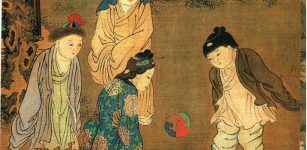 Ancient Chinese Ball Game Cuju Is Earliest Form Of Football
Ancient History Facts | Jan 22, 2016
Ancient Chinese Ball Game Cuju Is Earliest Form Of Football
Ancient History Facts | Jan 22, 2016 -
 Study Traces DNA Of Inca Emperors To Their Modern-Day Descendants
Archaeology | May 29, 2018
Study Traces DNA Of Inca Emperors To Their Modern-Day Descendants
Archaeology | May 29, 2018 -
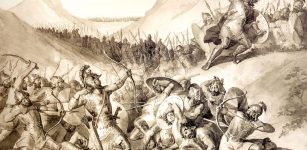 Armenia: Old Land Where Myths, Legends And Long History Meet
Civilizations | Apr 20, 2016
Armenia: Old Land Where Myths, Legends And Long History Meet
Civilizations | Apr 20, 2016 -
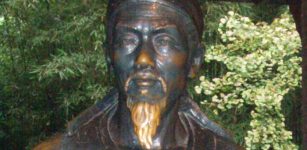 On This Day In History: Du Fu – ‘The Sage of Poetry’ Was Born – On Feb 12, 712
News | Feb 12, 2017
On This Day In History: Du Fu – ‘The Sage of Poetry’ Was Born – On Feb 12, 712
News | Feb 12, 2017 -
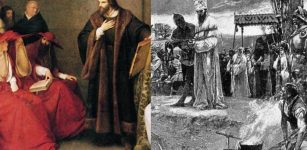 Jan Hus: Czech Reformer And Bohemian Religious Leader Was Burned At Stake For Heresy
Featured Stories | Dec 17, 2019
Jan Hus: Czech Reformer And Bohemian Religious Leader Was Burned At Stake For Heresy
Featured Stories | Dec 17, 2019 -
 Secret Passageways And Caves Beneath UK’s City Of Nottingham
Featured Stories | Feb 14, 2023
Secret Passageways And Caves Beneath UK’s City Of Nottingham
Featured Stories | Feb 14, 2023 -
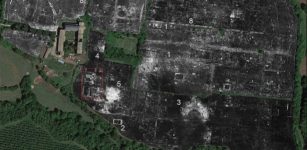 Amazing Underground Ancient Roman City Discovered In Italy
Archaeology | Jun 12, 2020
Amazing Underground Ancient Roman City Discovered In Italy
Archaeology | Jun 12, 2020 -
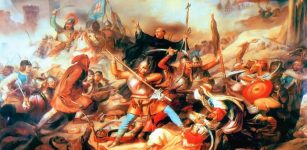 On This Day In History: Siege Of Belgrade – Hungarian Battle Victory – On July 4,1456
News | Jul 4, 2016
On This Day In History: Siege Of Belgrade – Hungarian Battle Victory – On July 4,1456
News | Jul 4, 2016 -
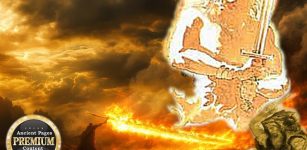 Shining Swords: Magical Artifacts That Symbolized Power, War, Punishment And Righteousness
Featured Stories | Nov 20, 2024
Shining Swords: Magical Artifacts That Symbolized Power, War, Punishment And Righteousness
Featured Stories | Nov 20, 2024 -
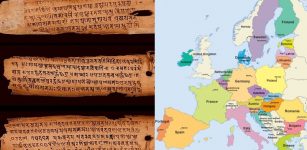 How Strong Is The Link Between Sanskrit And European Languages?
Linguistic Discoveries | Aug 5, 2020
How Strong Is The Link Between Sanskrit And European Languages?
Linguistic Discoveries | Aug 5, 2020 -
 Luxor – Ever-Lasting Legacy Of The Ancient Egyptian Civilization And The Pharaohs
Featured Stories | Mar 29, 2021
Luxor – Ever-Lasting Legacy Of The Ancient Egyptian Civilization And The Pharaohs
Featured Stories | Mar 29, 2021 -
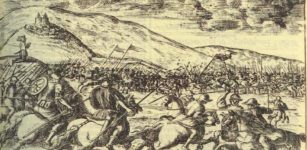 On this day in history: The Battle of the Frigidus – Sep 5, 394 AD
News | Sep 5, 2015
On this day in history: The Battle of the Frigidus – Sep 5, 394 AD
News | Sep 5, 2015 -
 Secrets And Lies: Spies Of The Stuart Era Played A Dangerous Game In The Shadows Of An Unstable Europe
Featured Stories | Nov 11, 2024
Secrets And Lies: Spies Of The Stuart Era Played A Dangerous Game In The Shadows Of An Unstable Europe
Featured Stories | Nov 11, 2024 -
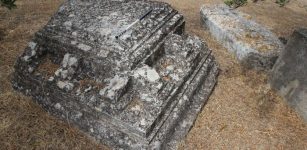 LIDAR Disovers 2,000-Year-Old Roman Temple Under Church In Danilo, Croatia
Archaeology | Dec 6, 2022
LIDAR Disovers 2,000-Year-Old Roman Temple Under Church In Danilo, Croatia
Archaeology | Dec 6, 2022 -
 Bonobos And Chimps: What Our Closest Relatives Tell Us About Humans
Featured Stories | Apr 6, 2023
Bonobos And Chimps: What Our Closest Relatives Tell Us About Humans
Featured Stories | Apr 6, 2023 -
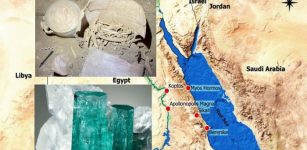 Roman Empire’s Emerald Mines In The Egyptian Eastern Desert – New Evidence
Archaeology | Mar 2, 2022
Roman Empire’s Emerald Mines In The Egyptian Eastern Desert – New Evidence
Archaeology | Mar 2, 2022 -
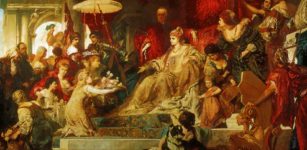 Tragic Reign Of Caterina Cornaro – The Last Queen Of Cyprus And Patron Of The Arts
Featured Stories | Jul 4, 2019
Tragic Reign Of Caterina Cornaro – The Last Queen Of Cyprus And Patron Of The Arts
Featured Stories | Jul 4, 2019 -
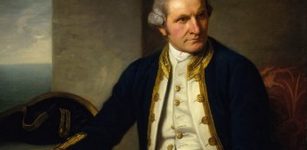 On This Day In History: Captain James Cook Spotted The East Coast Of Australia – On Apr 19, 1770
News | Apr 19, 2017
On This Day In History: Captain James Cook Spotted The East Coast Of Australia – On Apr 19, 1770
News | Apr 19, 2017 -
 Neanderthal Genes Influence Your Mood And Much More – Study Shows
Archaeology | Oct 6, 2017
Neanderthal Genes Influence Your Mood And Much More – Study Shows
Archaeology | Oct 6, 2017



